The summer of 2023 will be recalled as the hottest in 120,000 years. A recent trip to the Pacific Northwest to escape the Texas heat found our family trapped inside our vacation rental with triple digit temperatures and air quality indexes of 500–“hazardous” and “unhealthy” for humans.
Such global weirding, as climate change scientist Katharine Hayhoe calls it, takes a toll on insects and plant life as well. Our Spokane lockdown resulted from wildfires–their smoke blowing in from Canada as well as from a local fire. In Texas,temperatures remained in triple digits for weeks thanks to a heat dome, and met us upon our return while much of the state has been in severe drought for more than a year.
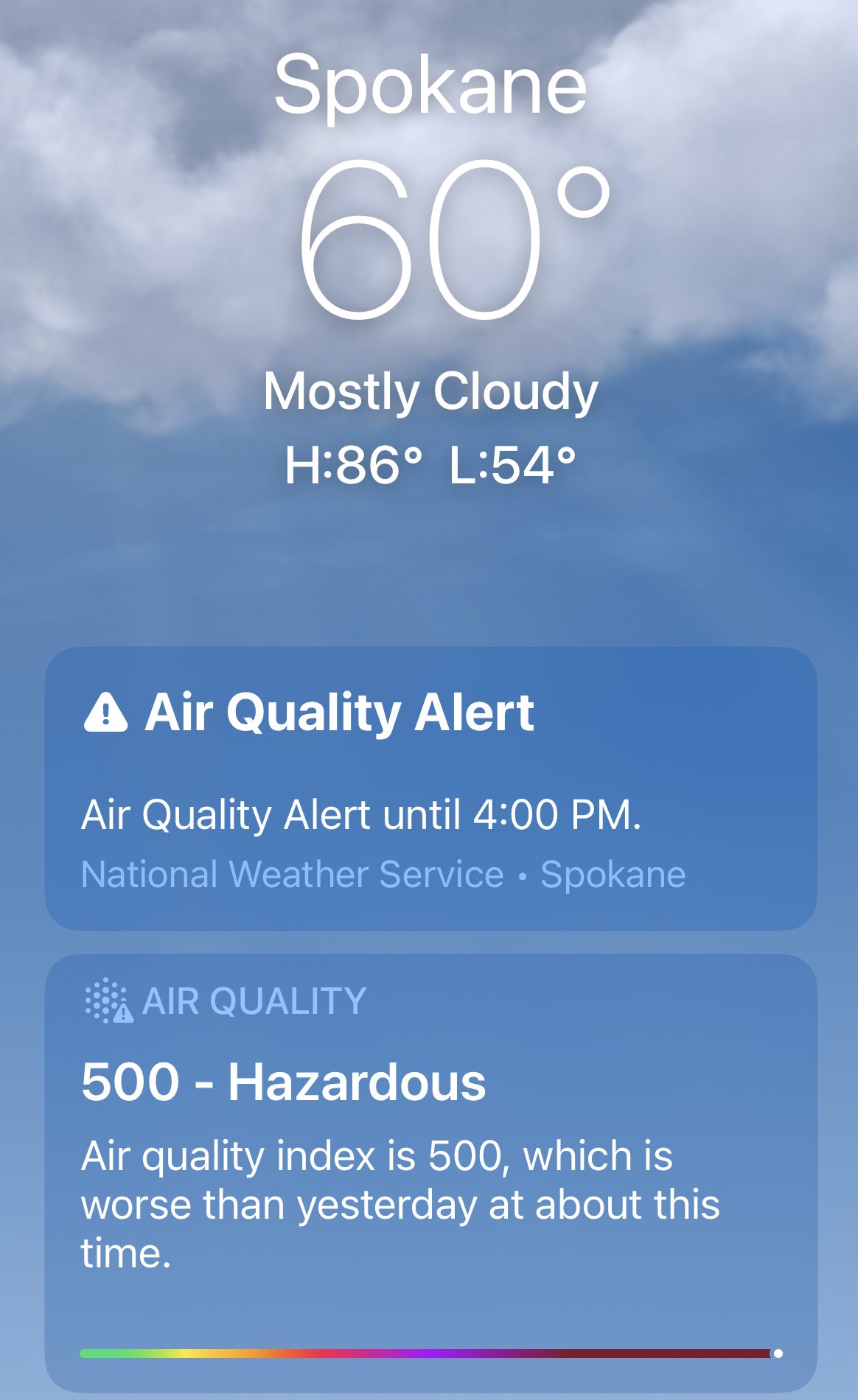
The Llano River in the Texas Hill Country, home of the Texas Butterfly Ranch and monarch roosting sites each October, has diminished to a trickle. A a recent visit revealed more of a bayou than the a navigable river. Not much blooming, just a few Goldenrod, Texas thistle and Snow-on-the-Mountain. The usual Frostweed stands, favorites of migrating monarch butterflies each fall, were burnt to a crisp, as reflected in the photo below.
While wildfires and summer heat are features of functioning ecosystems, 2023 has been extreme. The Spokane trip, and our encounter with severe wildfire smoke, begged the question of how such collectively severe conditions affect monarchs, bees and other pollinators.
“I would think that drought and destruction of habitats and lack of food sources would be bad for any pollinator,” said Molly Keck, board certified entomologist and beekeeper at Texas A&M AgriLife Extension Service, Bexar County. “I don’t think lack of competition makes up for the lack of food–especially since there’s really nothing to compete over. Maybe in other situations it’s good, but combined with heat and
drought, probably not.”
Andy Davis, migration studies expert at the University of Georgia Odum School of Ecology, weighed in with the qualifier that he was speaking only to migrating monarchs.
While specific studies on the impacts of smoke on monarchs don’t exist, one “really good one” examined how smoke affects flight performance in migrating painted lady butterflies. Researchers used a tethered flight mill in a lab setting and found that smoke negatively affected the flight distance of the butterflies.
“In other words, they did not fly as well,” Davis shared via email. He speculated that this would likely be applicable to monarchs and done not bode well for the fall migration. “We may see fewer than expected monarchs at the winter colonies, both on the west coast, and in Mexico. The good news is that despite this, the monarchs seem to be perfectly able to bounce back from low winter colony sizes the following year.”
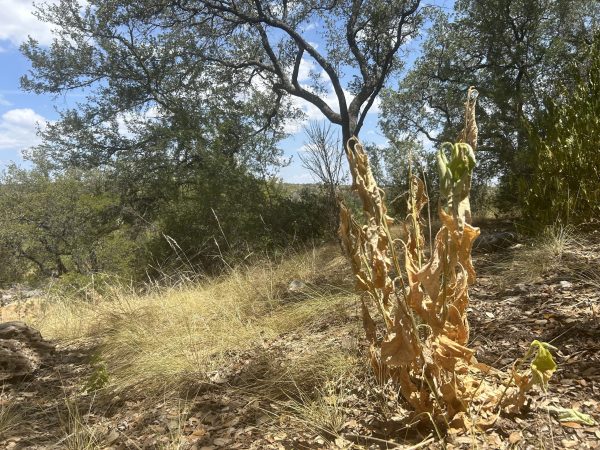
Frostweed stopped in its tracks by drought along the Llano River in the Texas Funnel, August 2023. –Photo by Monika Maeckle
Davis added that we should not cast the monarch migration in terms of “good years” and “bad years.” Even in years when the migration falters, some good comes from it, he said. The monarchs that make it to Mexico ot continue the life cycle “are the ones that then go on to have strong offspring, which then makes the population stronger.”
On the west coast, David James, who focuses on the western monarch butterfly population from Washington State University, agreed that heat domes, wildfires and drought “most definitely” have an impact on butterflies and other insects–but impacts vary according to species and conditions.
“Like any other environmental stress, there will be winners and losers,” James shared via email. “The winners will be those that are generalists, wider-ranging, mobile species able to avoid, disperse and adapt. The losers will be those ‘stuck’ in limited habitats, the habitat specialists.”
James said he doubts that wildfire smoke has a big impact on monarch migration but suggested it could affect caterpillar development. “All of this will occupy the lives of environmental scientists way into the future,” he said.
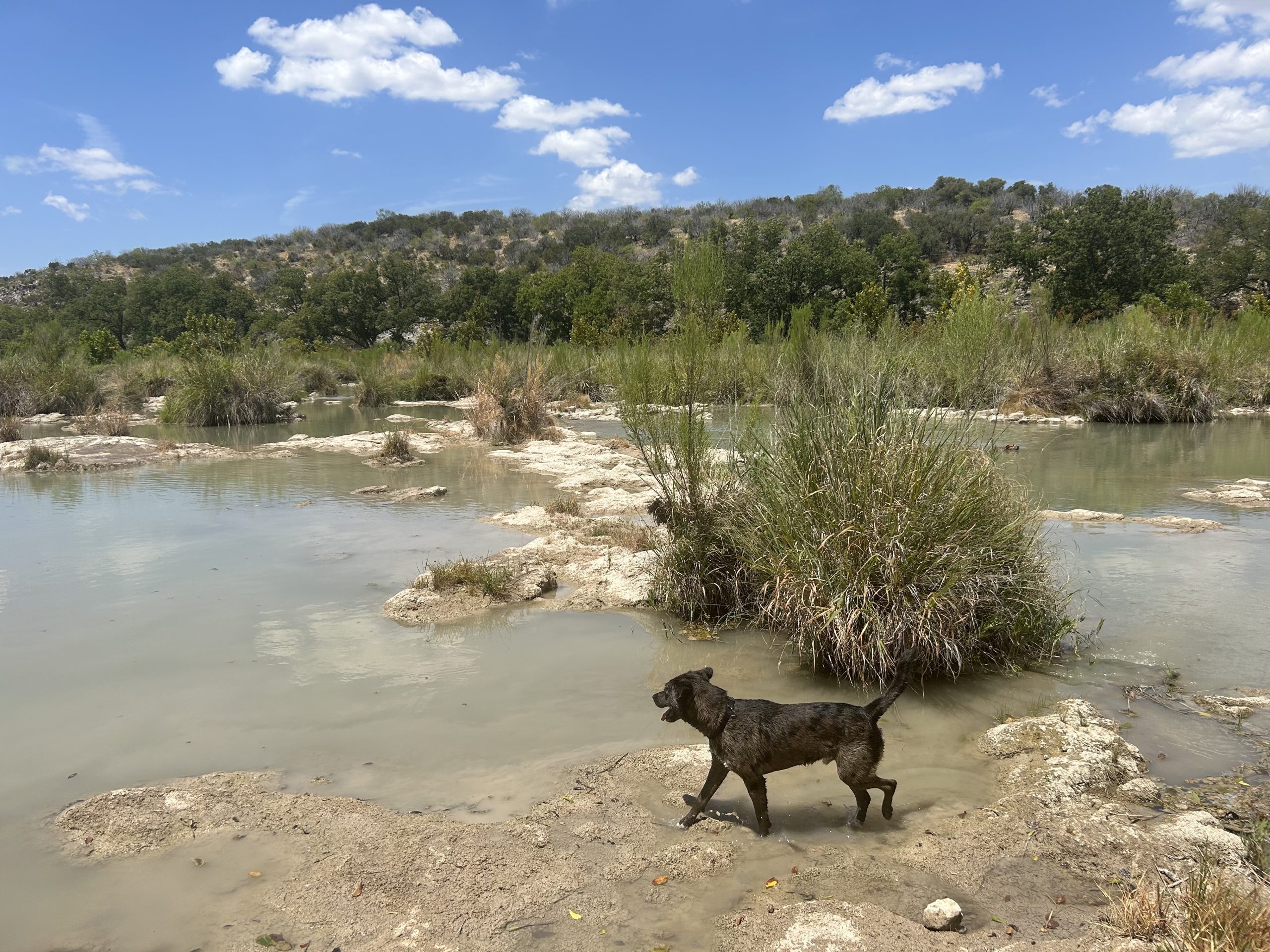
Our dogs appeared befuddled that they could walk rather than swim across the Llano River this week. Here, Trouble Rivard takes in the scene from the opposite bank where monarch butterflies traditionally roost each fall. –Photo by Monika Maeckle
Karen Oberhauser, monarch butterfly expert and director of the University of Wisconsin Madison Arboretum, said that excessive heat and drought will likely be reflected in lower monarch numbers this winter. Areas torched by wildfires will be unable to support monarchs or other herbivores until the vegetation recovers.
Recent analyses predict that monarch production in the northern part of their summer breeding range benefits from warmer temperatures, Oberhauser shared via email. “But we know from studies conducted in my lab that development slows down when temps are over 38C (about 100F, which happened in a lot of places this summer). Survival isn’t impacted until temps reach 40C (104F), as long as it cools down at nighttime. Constant exposure to temps of 36C or higher are lethal, but that rarely happens in the wild.”
In a December 2020 blog post titled Forests, Fires, And Insects, the Xerces Society’s executive director Scott Black made the case that while wildfires are part of natural ecosystem processes, those we’re experiencing now are hotter and more severe than in the past. Climate change and fire suppression are to blame.
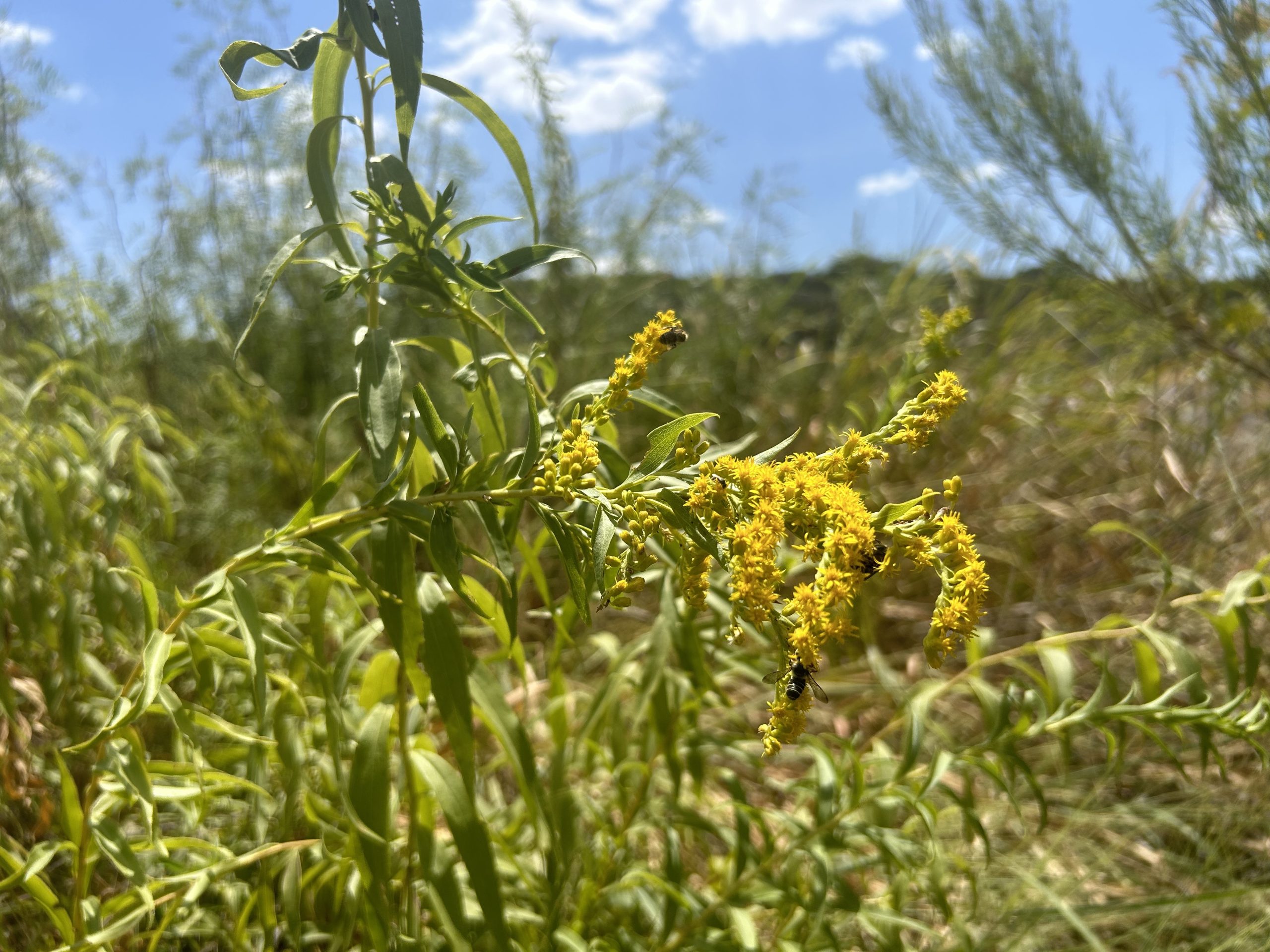
A few sprigs of Goldenrod attracted native bees on the Llano River this week. –Photo by Monika Maeckle
Many bees have short flight ranges and the scale and speed of severe fires could easily overwhelm them, Black explained. Solitary bees, which live underground, might be protected if they have completed their nests and are not active when the fires start. Bumble bees and other native social species that live in colonies usually nest at or just below ground level, and thus may be more at risk. Social bees are generally active periods later in the season than solitary bees, so they might still be foraging when fire season arrives.
Studies on how wildfires impact European honeybees have resulted in mixed conclusions. Some suggest smoke interferes with the insects ability to forage, changing the light polarization spectrum that they use to find their way. Others point out that the upside is several years after a fire, the landscape is renewed and offering abundant nectar and pollen wealth.
Barring a miraculous turn of events, this is the story of future summers. Pollinator habitats in cities can provide slight mitigation. Replace your water guzzling lawn with native and well adapted seasonal flowering plants–preferably a selection that take turns blooming throughout the year to offer seasonal pollinator fuel. To learn more, and to join our pollinator habitat initiative, check out our resources page.
TOP PHOTO: Could you find your way through this? Spokane, Washington, August, 2023. –Photo by Monika Maeckle
Related Articles:
- Monarch butterflies heading our way in what could be a “not great” year
- On the Llano River in the Texas Hill Country, recent rains bode well for monarch butterfly migration
- Dejavu: is 2022’s dry spell setting the stage for another Texas drought like 2011?
- Forever Journey: honor someone who died by tagging a monarch butterfly in their name
- Caterpillar condos tap monarch butterfly migration for hands-on nature lessons
- Three monarch butterflies tagged in honor of those who died recovered in Mexico
- Two monarchs tagged on the Llano River in honor of lost loved ones recovered in Mexico
- They’re here! Drought conditions greet monarch butterflies as they arrive in Texas
- Massive arrivals of monarch butterflies in the Texas Hill Country signal 2021 migration is on
Like what you’re reading? Don’t miss a single post from the Texas Butterfly Ranch. Sign up for email delivery, like us on Facebook, or follow us on Twitter, @monikam or Instagram.

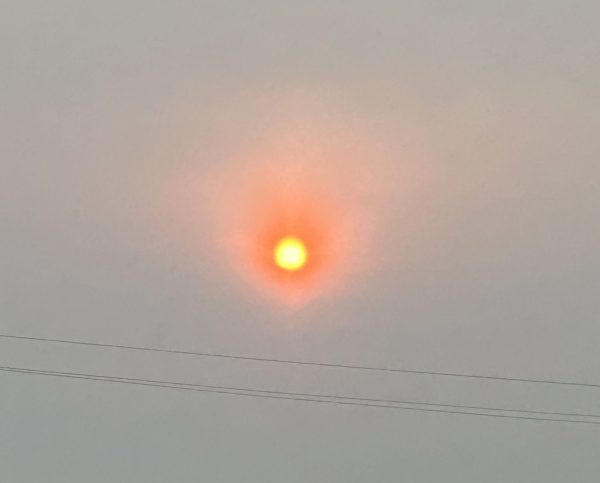
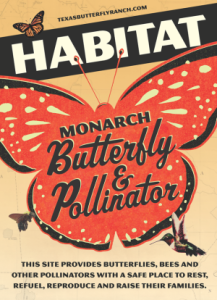
The migrants will be in Nebraska and Iowa on Sept. 5 – 11 when this 100 degree heat wave affects those two states.
https://www.cpc.ncep.noaa.gov/products/predictions/814day/
Something miraculous will happen! Life finds a way!
Hope you’re right!
Excellent article… thank you for making it available to us.
Thanks for reading and writing.